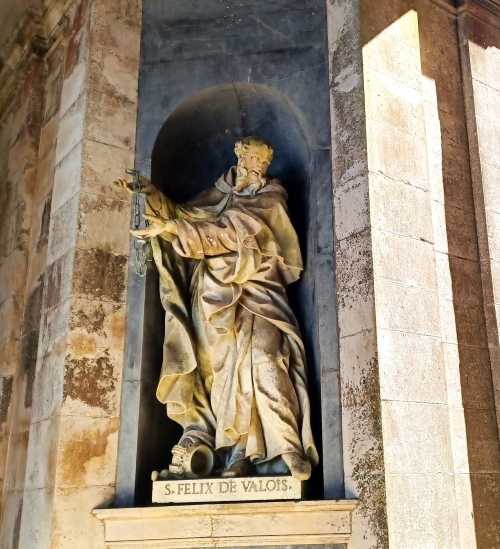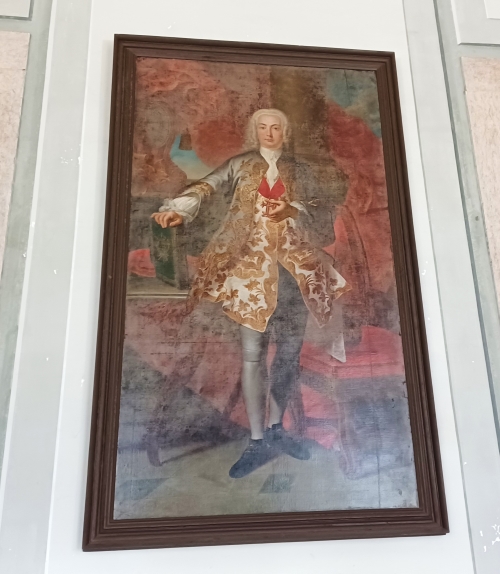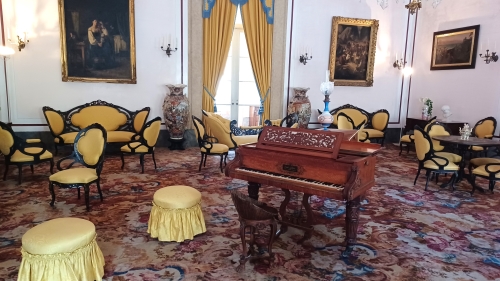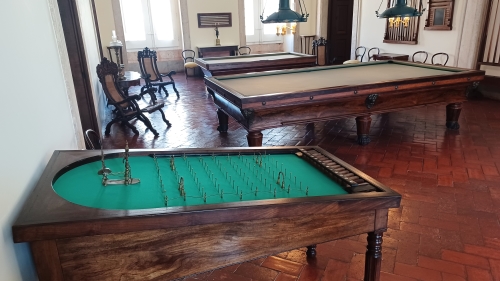Mafra is best known for its impressive Baroque palace. But, there’s some culinary highlights as well, including a namesake pastry.
A Short History
Nomadic early humans were on the Iberian Peninsula hundreds of thousands years ago. Settlements near present-day Mafra date to the Stone Age.
The Romans conquered the area about 2,000 years ago and set about to build fortresses, roads, and bridges. The Romans were deposed by the Visigoths in the 5th century, followed by the Moors in the 8th. There is little left from the Moorish occupation, but some of the churches in Mafra were certainly mosques 1,000 years ago. After the Reconquista by Portuguese Christian Armies, Mafra remained an agricultural outpost.
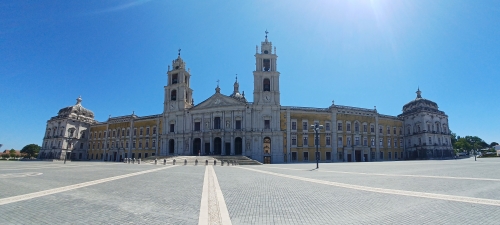
In 1717, King João V ordered the building of a monastery to celebrate the birth of his daughter. This project soon bloomed into the grand Mafra National Palace, the centerpiece of the tiny town.
After the abolition of religious orders in Portugal, the Palace became an army base and boot camp. In 1887, the Escola Prática de Infantaria e Cavalaria (Infantry and Cavalry School) was established and soldiers were able to train with horses in the expansive grounds by the palace. Today, the military still has a presence in the palace with the Infantry School and an equestrian training center.
Foodie Mafra
Pão de Mafra
Mafra is know for its namesake bread, the Pão de Mafra. In fact, the bread is so popular that every July there’s Festival do Pão de Mafra held in the Jardim do Cerco behind the Mafra Palace. It’s not just bread at the festival. There’s musical performances and other food vendors, too. Quite the location to try the city’s famous bread!
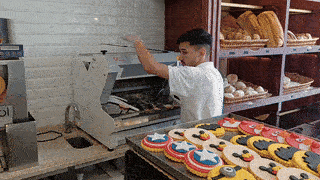
Mafra has always been a prime agricultural region for growing fruits and vegetables as well as the wheat used in Pão de Mafra. Being so close to the ocean, Mafra is a windy place and so windmills were used to grind the flour for the bread.
Even though Mafra is close to Lisbon, it was, historically, a rural area without a lot of money. So, the bread they made was rustic, unlike the fancy white breads consumed by Lisboetas (people from Lisbon).
Typically, Pão de Mafra is made with combination of wheat and rye and fermented twice, though for a shorter period of time that most other Portuguese loaves. It is also wetter and is usually baked with stream. The crust of the finished bread is chewy, similar to the more famous Ciabatta.
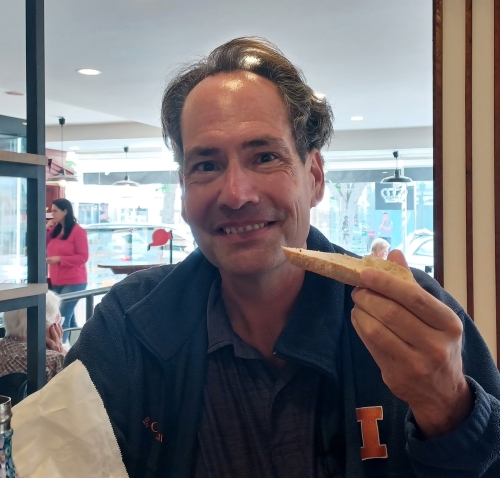
If you’re not in Mafra for the bread festival, you can sample some at one of the bakeries in town. Not every bakery has it, but I’ve enjoyed the Pão de Mafra at Pastelaria Polo Norte. Pão Real – Sede is an artisanal bakery with excellent bread as well.
Pastéis de Mafra
Pastéis de Mafra is a little shortcrust pastry filled with beans, almonds, and egg yolk custard. And, before you say it, I know, a bean pastry doesn’t sound appetizing. But, if you give them a try, I’m sure you’ll be like me; a former skeptic converted into a Pastéis de Mafra believer!
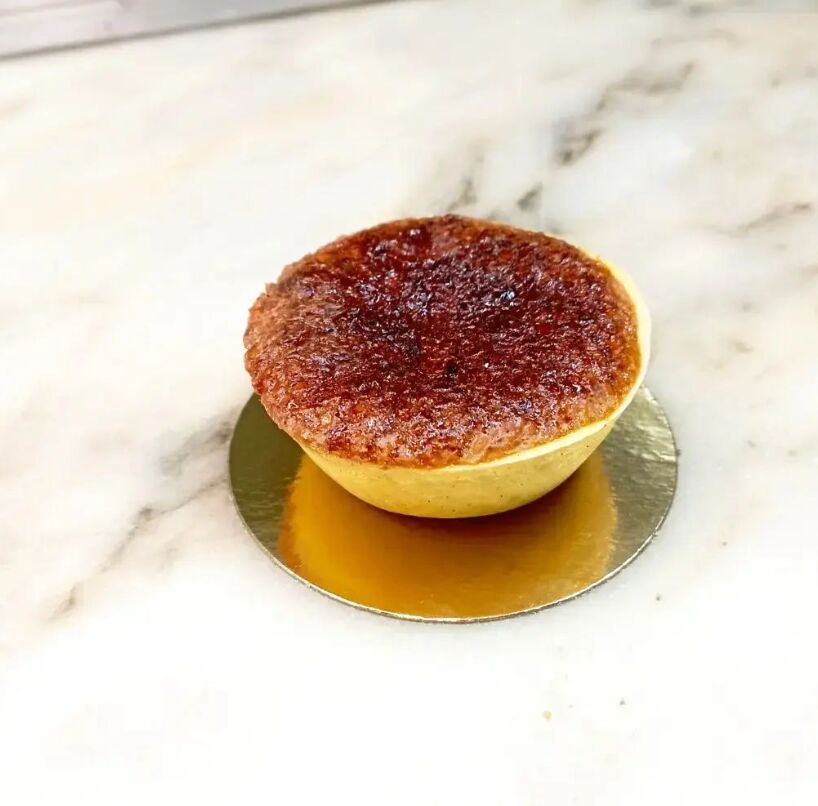
The namesake pastry of Mafra is surprisingly difficult to find. But, a place with the pastry in their name, Pastéis de Mafra, makes them as their specialty! They’re not in Mafra, though, being 3 miles away in Anexo.
Parra
Parra is an oval shaped puff pastry filled with egg cream. The name Parra translates to “grape leaf” or “grape trellis” which is appropriate since the little treat is shaped kind of like a leaf.
Parras are available all over Portugal, but when you name your place Casa das Parras, you better do them well. And, in Mafra, Casa das Parras does just that.
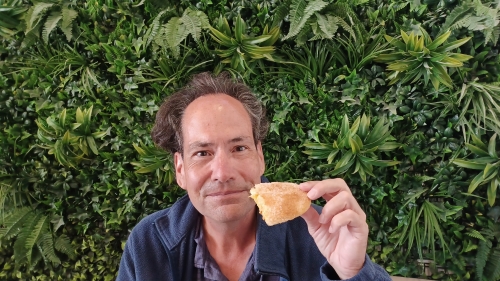
Drinking in Mafra
Although the Douro Valley is much better known, the Lisbon wine region is the top producer of wine by volume in Portugal. And, it’s not just quantity in the Lisboa region. Several excellent producers are here including some close to Mafra.
ManzWine
Jampal is a white grape variety from Portugal that was nearly extinct until it was rescued from an abandoned vineyard in nearby Cheleiros 20 years ago. Today, ManzWine is the only producer making 100% Jampal wine; acidic with tropical fruit notes.
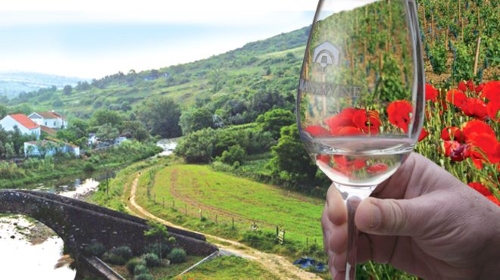
The winery is just south of Mafra, about 30 minutes by bus or 15 by car. Book a tasting online to try this unique wine. Manzwine also has several other experiences like bike rides, hikes, and a tour in a classic car.
Quinta de Sant’Ana
Quinta de Sant’Ana has a winemaking tradition dating back almost 400 years. The current owners have been working to rejuvenate the property for over 30 years as it had to be abandoned after the Carnation Revolution of 1974.
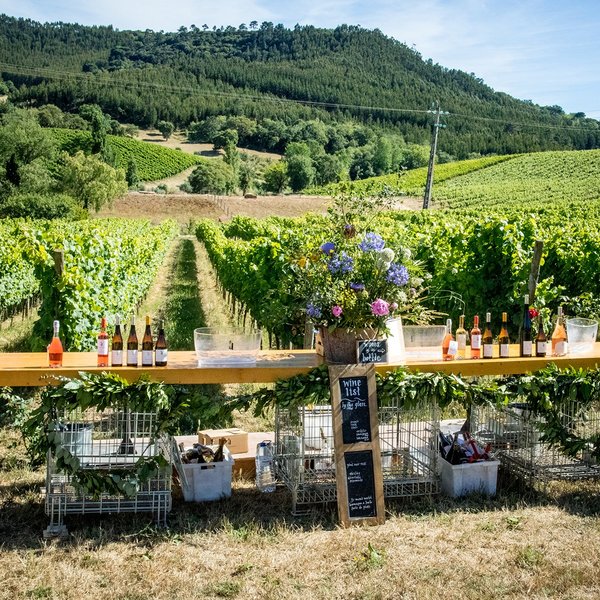
The wines made at Quinta de Sant’Ana are organic with an emphasis on natural wines. You can book a tasting online and you can even stay at the Quinta.
There’s a bus that will take you from Mafra to Quinta de Sant’Ana in about 40 minutes or drive there in 15.
Things to do in Mafra
Mafra National Palace
The vast majority of visitors to Mafra come for one reason: The Mafra National Palace. And, for good reason. It’s spectacular!
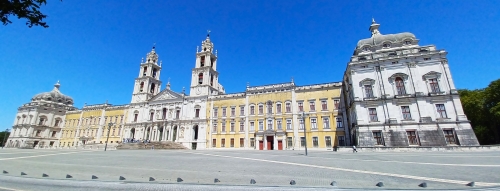
The king of Portugal, João V, made a promise that if his wife produced an heir, he would build a magnificent convent. When Maria Bárbara (the future Queen of Spain) was born, João made good on his promise and construction began in 1717.
Construction, which took 38 years, was funded by slave labor and the theft of gold and diamonds from colonial Brazil. The massive project required as many as 45,000 workers on site. A hospital was built in the palace to help workers recover from injuries suffered on the job. It was so dangerous that almost 1,400 workers died during construction. Thousands of others were injured, some severely.
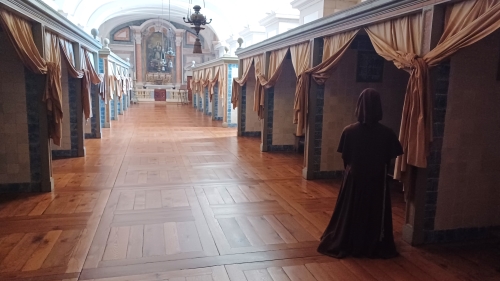
In 1755, the project was deemed completed, not because it was actually finished, but because the devastating earthquake that had left Lisbon in ruins required the workers to start rebuilding the city.
Apparently, the king wasn’t thrilled with result, and the palace was never occupied full time, although he would stay there when using the nearby Tapada hunting grounds.
During the Napoleonic Wars, Portugal was invaded by France and the royal family fled to Brazil, taking much of the valuable artwork and furniture from the palace with them. When religious orders were dissolved in 1834, the monastery was abandoned and taken over by the military.
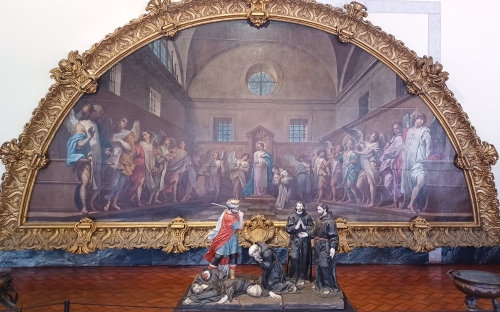
The Portuguese monarchy was overthrown in 1910. Portugal’s last king, Manuel II, stayed at the palace on his way to exile in the UK.
The palace’s façade is 220 meters long (over 720 feet), centered by the basilica entrance. It’s really hard to fathom the size of this structure, but knowing that there’s 1,400 rooms gives you an idea of the scale.
The entranceway to the church is decorated with statues of saints and local marble. Inside are several 18th century paintings, but you’ll be in awe of the soaring cupola held aloft by white and rose marble columns.
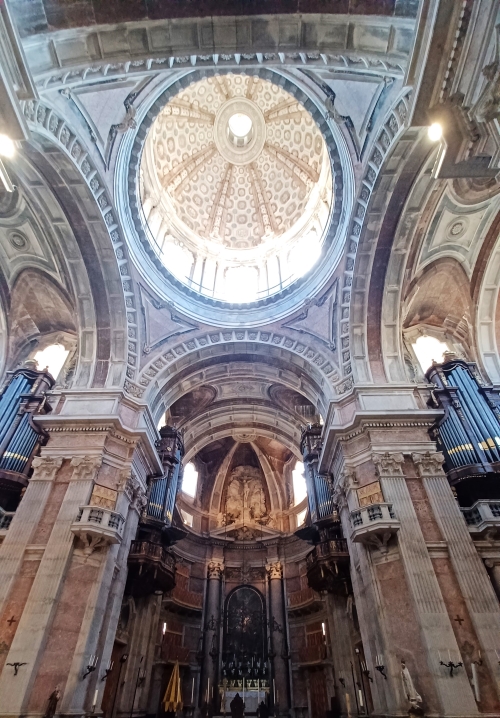
Inside the palace itself, you can see more of the enormous wealth generated by the slave trade and colonialization. Gold and artwork abound.
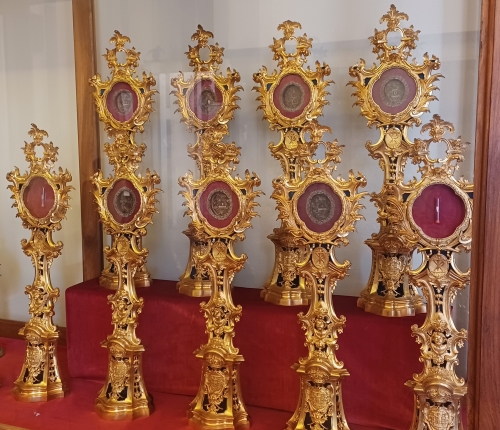
It’s easy to see why King João V was known as the Portuguese Sun King (o Rei-Sol Português). The walls are filled with paintings of men in powdered wigs and women with high hair and pearls that put in mind the original Sun King, Louis XIV of France. Even the decorations, like the billiard room have a Franco look.
The Rococo (Late Baroque) library is the highlight of the palace. Ornately decorated, as was the Rococo style, the library is absolutely massive. 88 meters (almost 290 feet) long, the shelves are packed with 36,000 books, kept safe from insect damage by colonies of bats that live in the library and devour any vermin that could munch on the priceless pages.
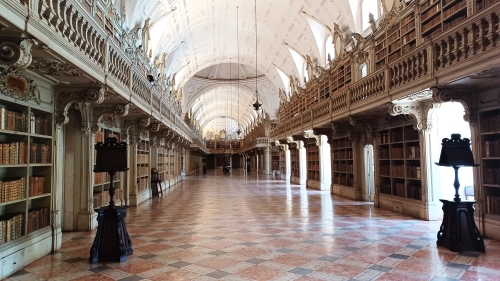
Jardim do Cerco
Behind the palace is the Jardim do Cerco. Covering 9 hectares (about 22 acres), the space was originally for the Franciscan Friars who lived in the palace’s monastery.
There’s several pathways leading to formal gardens and more natural settings. There’s even a little vegetable and herb garden, lovingly tended by workers.
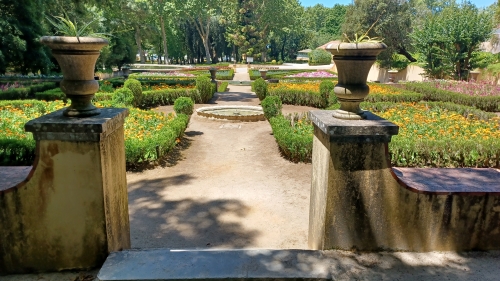
If you get some provisions from the nearby Mercado Municipal, you can have a picnic in the garden. It’s quite the peaceful respite after the tourist crush in the Palace.
Tapada Nacional de Mafra
After the completion of the palace in Mafra, King João V ordered the construction of nearby hunting grounds. The result was the Tapada Nacional de Mafra, and 800 hectare (about 2,000 acre) open space. You can see the gruesome results of the royal hunts in the form of dead animal heads, hung in the palace as grotesque trophies.
Today, the park is open to the public and has lots of trails. Hiking is very popular, as you can imagine, but so is horseback riding and even archery. There’s wildlife in the park including boars, foxes, deer, and many species of birds.
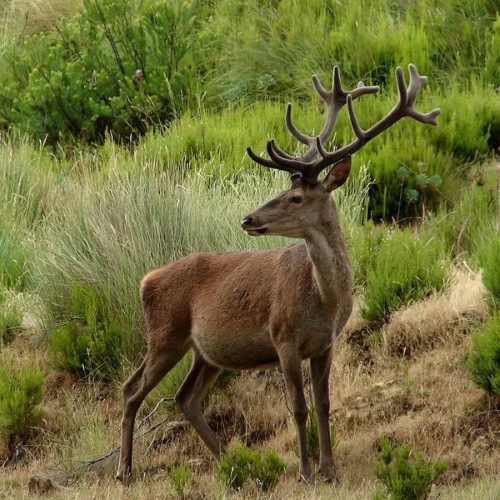
If you want to spend more time in the park, there’s even reasonably priced guesthouses where you can stay.
Aldeia Museu José Franco
Ceramics have been part of the culture in Mafra since prehistoric times. When Mafra was officially established as a town almost 900 years ago, potters were paying taxes to the kingdom. In the 20th century, dozens of ceramicists were working in Mafra.
José Silos Franco had experience in this business, helping his mother sell clay cooking vessels to support the family. Showing a talent for ceramics, including colorful glazes and fanciful designs, José restored his grandfather’s pottery factory and began producing his own works.
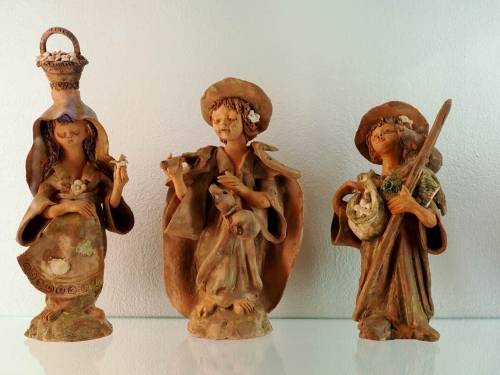
In 1954, he began work on his most ambitious work, the Aldeia (the Village). Here, José created a traditional Portuguese village complete with a windmill, castle, and even a farm. Inside the cute houses are clay figures representing typical 20th century Portuguese occupations like watchmaker, tailor, and cobbler.
The village is quite charming, but the highlight is the museum where José’s work is displayed. It’s in the museum where you can really see his unique and surreal nature of his work.
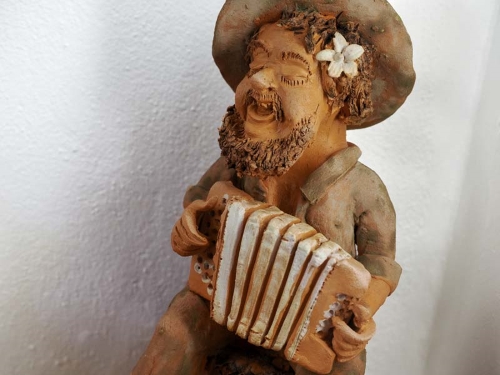
There’s a small bakery on site where they use the Franco’s original oven to make bread. You can also buy a glass of wine or bring a picnic. Admission to the museum and village is free.
Daytrips
Lisbon
Lisbon is, of course, worth way more than a day trip. The amazing food, including Pastel de Nata, and sights can take up a week or more of your time. The bus gets to Lisbon in less than an hour.
Ericeira
Just west of Mafra is the seaside town of Ericeira. This spot attracts surfers from around the world for the amazing waves. Of course, being on the ocean, seafood is very popular in Ericeira, but the influx of surfers have brought a lot of interest in vegetarian/vegan and healthy food choices.
You can drive there in 10 minutes or be in Ericeira in less than half an hour by bus.
Setúbal
Lesser known than the others is Setúbal, a seaside city known for the local specialty Choco Frito, or fried cuttlefish (Ao26 in Lisbon has a terrific vegan version). Setúbal has beaches, the Parque Natural da Arrábida, and a 16th century hilltop fort.
It takes 2.5 hours to get to Setúbal by public transit with 2 changes. In this case, driving might be a better idea. With a car you can get to Setúbal in less than an hour.
Transportation
Mafra is about 30 km northwest of Lisbon. The best way to get there is by the frequent bus from the Campo Grande station. Check the schedule for the best ones that take 45 minutes. Other buses make more stops and take over an hour. You can also drive to Mafra from Lisbon in about 30 minutes.
There’s also a train, but the station is quite a ways out of town (30 minute drive of 2 hour walk) making it useless to get to Mafra.
Mafra itself is compact, flat and walkable. There’s also local bus service if you need it.
Index of Things to do in Mafra
Palácio Nacional de Mafra (Mafra National Palace)
Spectacular royal palace.
Terreiro D. João V, Mafra, Portugal
Jardim do Cerco
Gardens behind the palace.
L.go Gen. Humberto Delgado, Mafra, Portugal
Tapada Nacional de Mafra
Sprawling national park.
Portão do, 2640-602 Mafra, Portugal
Aldeia Museu José Franco
Recreation of a traditional Portuguese village.
N116 34, 2640-578 Mafra, Portugal
Centro de Recuperação do Lobo Ibérico (CRLI)
Non-profit wolf rescue.
Quinta da Murta, 2665-150 Gradil, Portugal
Index of Places to Eat & Drink in Mafra
Pastelaria Fradinho
Excellent bakery.
Praça da RepÚblica n.º 28, 2640-595 Mafra, Portugal
Casa das Parras
The place to get parras.
R. Prof. Guilherme de Assunção 41, 2640-542 Mafra, Portugal
Pastelaria Polo Norte
Bakery with several locations in Mafra.
Pão Real – Sede
Great spot to get Pão de Mafra,
Terreiro D. João V Lt. 40 2º Esq, 2640-492 Mafra, Portugal
Pastéis de Mafra
The place to get Pastéis de Mafra.
R. 25 de Abril n°10A, 2640-702 Anexo, Portugal
Cafetaria Doce Camélia
Bakery.
R. Primeiro de Dezembro 17, 2640-454 Mafra, Portugal
Escondidinho
Restaurant near the palace with veg. options.
Tv. da Quinta Nova 17, 2640-473 Mafra, Portugal
Lagoa D’Ouro
Restaurant with a vegan option on the plate of the day.
R. Luís de Camões 27, 2640-501 Mafra, Portugal
Restaurante Improvável
Restaurant with a couple veg. options and nice wine list.
Largo Conde Ferreira, 2640-492 Mafra, Portugal
Index of Shopping in Mafra
Mercado Municipal de Mafra
Indoor market.
R. José Elias Garcia, 2640-495 Mafra, Portugal
ManzWine
Only producer of wine made from the nearly extinct Jampal grape.
Largo da Praça 8 A, 2640-160 Cheleiros, Portugal
Quinta de Sant’Ana
Winery and 4 star hotel.
R. Direita 3, 2665-113 Gradil, Portugal
Index of Accommodations in Mafra
Mafra Hotel
One of the few hotels in the city.
Av. 25 de Abril 23, 2640-456 Mafra, Portugal
Casa do Salabredo
Guesthouse in the Tapada Nacional de Mafra.
Portão do Codeça, 2665-602 Mafra, Portugal
About the Author
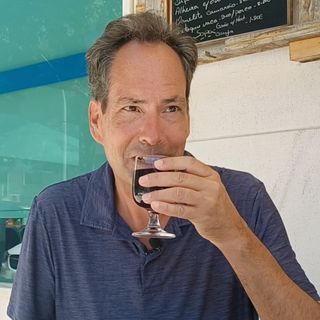
Brent Petersen is the Editor-in-Chief of Destination Eat Drink. He currently resides in Setubal, Portugal. Brent has written the novel “Truffle Hunt” (Eckhartz Press) and the short story collection “That Bird.” He’s also written dozens of foodie travel guides to cities around the world on Destination Eat Drink, including an in-depth eating and drinking guide to Portugal. Brent’s podcast, also called Destination Eat Drink, is available on all major podcasting platforms.


